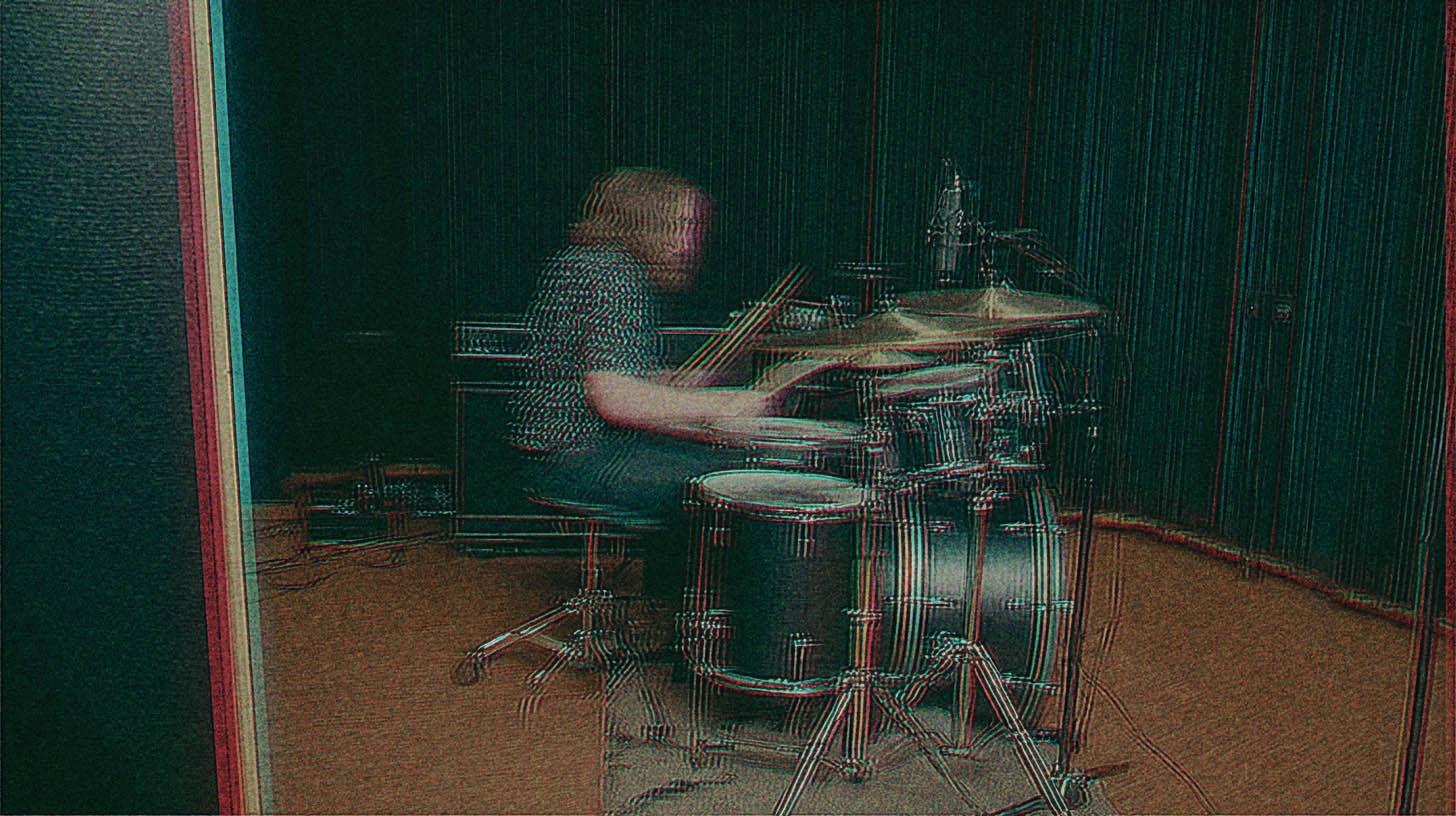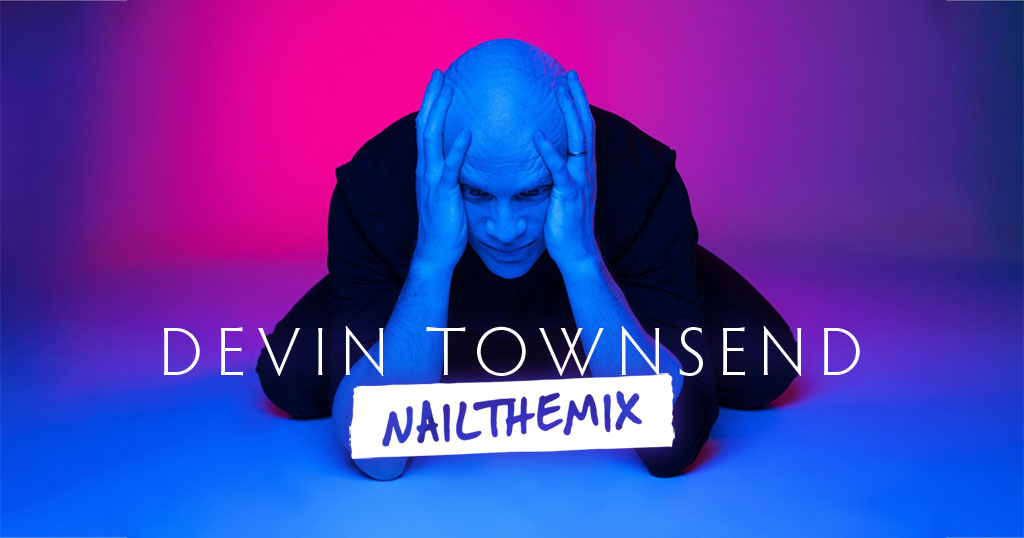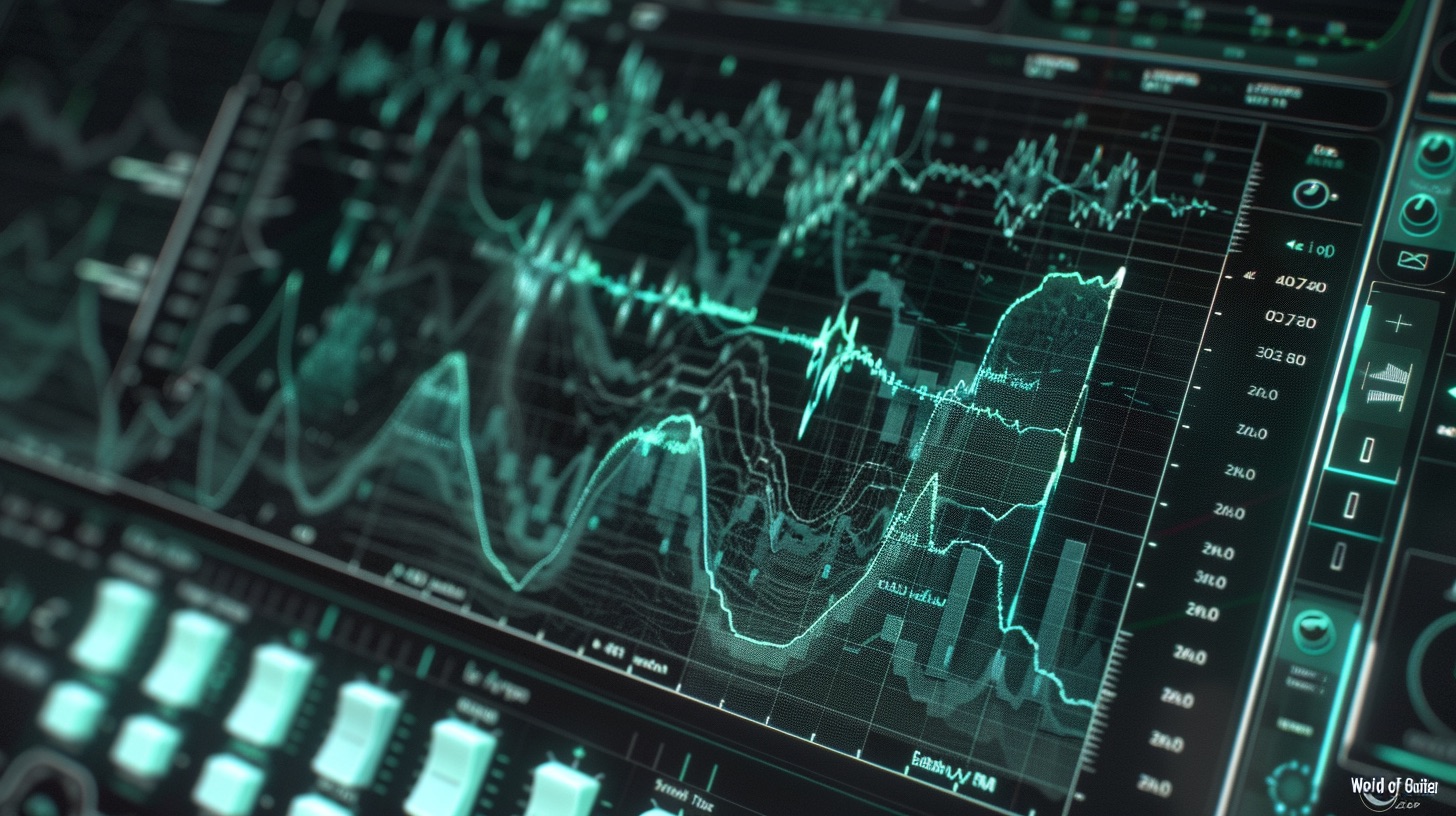
Melodyne 5: Precision Vocal Editing for Brutal Metal Mixes
Nail The Mix Staff
Alright, let's talk vocals. In metal, especially modern metal, vocals aren't just a topline; they're a weapon. From guttural lows to soaring highs, and everything in between, they need to hit hard and sit perfectly in a dense, aggressive mix. And while a killer performance is non-negotiable, sometimes even the best takes need a little… surgical assistance. That’s where a tool like Celemony’s Melodyne 5 comes in.
Now, we've all heard the debate: "Do plugins really matter?" Our take at Nail The Mix? It depends on what you're trying to do. If you need to EQ a snare, pretty much any decent EQ plugin will get you there if you know what you’re doing – whether it's a stock DAW EQ or a fancy emulation like the SSL Channel Strip. But for highly specific tasks? Yeah, the right tool can be a game-changer. Think Soothe2 for taming harsh guitar fizz without mangling the tone, or a specific amp sim like a Neural DSP Archetype when you're chasing that signature sound.
Vocal tuning and editing, especially to the level required in modern metal, is one of those specific tasks. And Melodyne 5 is a serious contender for the top spot.
Why Melodyne 5 Slays for Metal Vocals (And Beyond)
Melodyne isn't just another "auto-tune" plugin. It's a deep, powerful audio editor that lets you get incredibly granular with pitch, timing, and even the timbre of your audio. For metal, this is huge.
Surgical Pitch Correction That Hits the Mark
Forget that robotic, over-processed sound (unless that's what you're intentionally going for). Melodyne’s algorithms, especially the "Melodic" algorithm for vocals, are renowned for their transparency. You can make significant pitch adjustments without the obvious artifacts you might get from lesser tools.
- Handling Aggression: Whether it's a clean vocal that's just a hair flat, a melodic scream that needs to lock in with a harmony, or even tightening the pitch center of a sustained growl, Melodyne gives you the control. For really atonal harsh vocals, you might be focusing more on timing or formant shifts, but for anything with discernible pitch, it’s gold.
- Blob by Blob: You see the notes as "blobs," and you can grab them, move their pitch, fine-tune their drift, and modulate their pitch contour. Tools like the Pitch Grid and the Pitch Center macro make quick work of general tuning, while the Pitch Modulation and Pitch Drift tools let you smooth out or enhance vibrato and scoops.
Tightening Up Timing and Phrasing Like a Metronome
Metal is all about precision. A vocal that drags or rushes, even slightly, can kill the impact of a killer riff. Melodyne's timing tools are incredibly intuitive.
- The Quantize Time Macro: This is your friend for locking vocals to the grid. But don't just snap everything to the nearest 16th note. Use it judiciously. Sometimes, pulling a phrase slightly ahead of the beat or letting it sit back can enhance the groove.
- Nudging Notes: You can manually drag blobs to adjust their timing with surgical precision. This is perfect for aligning stacked vocals or ensuring a scream hits right with a snare drum. For instance, in a rapid-fire vocal passage, you might select a group of notes and use the Attack Speed tool to sharpen their transients, making them cut through a busy Toontrack Superior Drummer 3 pattern.
Taming Sibilance and Harshness with a Scalpel
Screamed vocals, in particular, can have some nasty sibilance or high-frequency harshness. While a dedicated de-esser like a FabFilter Pro-DS is great, Melodyne offers a unique way to tackle this.
- Amplitude Tool on Sibilance: You can visually identify the sibilant part of a note blob (it often looks different) and use the Amplitude Tool to specifically turn down just that part of the note.
- Spectral Editing (Studio Version): If you have Melodyne Studio, you can dive into spectral editing and attenuate offending frequencies within a specific note event. This is like micro-EQing right on the performance. Want to reduce a specific whistle tone on a high scream without affecting the fundamental? This is how.
Crafting Killer Harmonies and Vocal Stacks
Need to create harmonies or just make sure your doubles and triples are super tight? Melodyne makes this a breeze.
- Duplicating Tracks & Offsetting Pitch: Copy your lead vocal track, open it in Melodyne, and easily create harmonies by shifting the notes. You can then fine-tune the pitch and timing of these new harmony layers to perfection.
- Reference Tracks: Use one vocal track as your timing and pitch guide and conform other layers to it. This is invaluable for getting those ultra-tight gang vocals that sound like a single, massive voice.
Melodyne 5 vs. The Usual Suspects: What’s the Real Deal?
Okay, so Melodyne is powerful. But how does it stack up against other options you might already have or be considering?
Melodyne vs. Auto-Tune: The Classic Showdown
Antares Auto-Tune is iconic, and for good reason. It has "that sound" (the "T-Pain effect") which can be cool, but it's often more of an effect than a transparent correction tool.
- Transparency vs. Character: Melodyne generally wins for transparent, natural-sounding pitch correction. Auto-Tune, especially in its "classic" mode or when pushed hard (like with a fast Retune Speed), imparts a more noticeable character.
- Workflow: Melodyne’s graphical note-based editing feels more like working with MIDI. Auto-Tune (in its Graph Mode) offers similar detailed editing, but many find Melodyne's interface more intuitive for complex tasks. If you just need quick, set-and-forget tuning on a backing vocal, Auto-Tune EFX+ or Auto-Tune Access can be faster. But for intricate lead vocal work, Melodyne’s depth is often preferred.
Melodyne vs. Your DAW's Built-In Tools (Flex Pitch, VariAudio, etc.)
Most DAWs like Logic Pro X (Flex Pitch), Cubase (VariAudio), and Studio One (Melodyne Integration via ARA) have their own pitch correction tools. These are often surprisingly good for quick fixes.
- Convenience vs. Power: Built-in tools are great for not breaking your workflow. However, Melodyne’s algorithms are generally considered superior, especially for complex material or when you need to avoid artifacts. The level of control over pitch drift, modulation, and formants is typically deeper in Melodyne.
- ARA2 Integration: The Game Changer: This is HUGE. With ARA2 (Audio Random Access), Melodyne integrates seamlessly into compatible DAWs. It’s like using a built-in feature – no more tedious audio transfers. You open Melodyne as an insert (or region effect), and it analyzes the audio in place. This makes the workflow incredibly fast and almost erases the "separate program" feel. Pro Tools has also been improving its ARA integration with recent versions.
What About Revoice Pro or Other Specialized Tools?
Synchro Arts Revoice Pro is another heavyweight, particularly strong for complex vocal alignment (like ADR for film) and creating incredibly tight vocal stacks.
- Depth of Specialization: Revoice Pro excels at automated alignment of multiple vocal layers and generating realistic doubles. If your main gig is massive vocal productions with tons of layers needing precise alignment, it's worth a look.
- Price and Complexity: Revoice Pro is typically more expensive and can have a steeper learning curve for its advanced features. Melodyne, while deep, can be approached more simply for basic pitch and time tasks.
For most metal producers, Melodyne hits a sweet spot of power, transparency, and workflow, especially with ARA2.
Getting Your Hands Dirty: Actionable Melodyne 5 Tips for Metal
Knowing the features is one thing; using them effectively is another.
The "Slightly Imperfect" Metal Vocal Trick
Resist the urge to tune everything to absolute robotic perfection (unless that’s a specific creative choice, like in some industrial metal). A bit of human imperfection can keep vocals sounding aggressive and real.
- Focus on the Flaws: Use Melodyne to correct the obvious sour notes or major timing issues. For instance, if a scream starts sharp then settles, use the Pitch Modulation tool to smooth the attack.
- Keep the Character: Don't iron out all the natural scoops and bends that give a vocal its personality. Adjust the Pitch Grid sensitivity or manually fine-tune rather than just snapping everything hard.
Polyphonic Power (DNA): Fixing That Sour Guitar Chord or Bass Note
Melodyne Studio’s Direct Note Access (DNA) technology is bonkers. It can analyze polyphonic audio (like a guitar chord) and let you edit individual notes within it.
- Lifesaver for Instruments: Got a killer guitar take where one note in a complex chord is slightly out? Or a bassline where one note is a bit flat? Instead of re-tracking, you might be able to fix it with DNA. It’s not magic for all polyphonic material, but it can be surprisingly effective on cleaner, more defined sources. Imagine a Dingwall bass with a low B that's just a few cents flat in an otherwise perfect take – DNA could be your hero.
Workflow Wins: ARA2 Integration is Your Friend
If your DAW supports ARA2 (most major ones do now, like Reaper, Cubase, Studio One, Logic Pro X, and newer Pro Tools versions), USE IT.
- Seamless Editing: It feels like Melodyne is part of your DAW. No more exporting audio, editing in standalone Melodyne, then re-importing. This speeds things up massively and encourages you to use it more freely for small tweaks.
Don't Forget Formants and Timbre
The Formant Tool in Melodyne lets you shift the resonant frequencies of a note without changing its pitch.
- Character Shifting: Subtle formant shifts can alter the perceived character of a vocal. You can make a voice sound slightly deeper or brighter, or help it cut through a dense mix without aggressive EQ. For screams, playing with formants can sometimes enhance the aggression or change the "vowel" sound.
- Mix Placement: If a vocal is getting masked by guitars, a slight upward formant shift might help it poke through, sometimes more naturally than just boosting high-mids with an EQ like the FabFilter Pro-Q 3.

100+ Insanely Detailed Mixing Tutorials
We leave absolutely nothing out, showing you every single step
The Bigger Picture: Do You Need Melodyne 5?
Here’s where we circle back to our plugin philosophy. Melodyne 5 is a specialized tool. For the specific, demanding task of detailed vocal (and sometimes instrument) pitch and time correction, it absolutely makes a difference. The level of control and transparency is often a step above general-purpose tools.
However, don't fall victim to Plugin Acquisition Syndrome. If your DAW’s built-in tools are getting you 90% of the way there for your needs, and you're happy with the results, maybe you don't need to shell out for Melodyne right now. But if you're constantly frustrated by the limitations of other tools, or you're aiming for that top-tier, polished modern metal sound, Melodyne is a serious investment in your sonic quality.
Remember, the skills come first. Learning to hear pitch inaccuracies, to understand what needs correcting versus what adds character, is more critical than owning any specific plugin. But once you have those skills, a powerful tool like Melodyne lets you execute your vision with precision. Also, keep an eye on plugin latency; while ARA2 is efficient, loading up many instances on complex sessions can still add up. Most DAWs have good delay compensation, but it’s something to be aware of, especially if you're doing intricate parallel processing setups where phase is critical (which can also be affected by heavy compression).
Elevate Your Metal Mixes with Nail The Mix
Melodyne 5 is a beast for getting vocals (and more) to sit perfectly in your metal productions. It’s a scalpel that allows for incredibly detailed work, helping you achieve that pro-level polish.
If you’re serious about taking your metal productions to the next level and want to see how world-class producers use tools like Melodyne, along with every other plugin and technique in their arsenal, then you need to check out Nail The Mix. Every month, you get access to the actual multitracks from massive metal songs and watch the original producers mix them from scratch, explaining every decision, every plugin choice (yes, often including Melodyne!), and every fader move.
Learn from the best and unlock your sound with Nail The Mix. Stop guessing and start learning the techniques that make a real difference.
Ultimately, Melodyne 5 is an incredibly powerful tool in the right hands. Focus on your skills, understand what you're trying to achieve, and if transparent, detailed pitch and time manipulation is what you need, Melodyne 5 is tough to beat.
Get a new set of multi-tracks every month from a world-class artist, a livestream with the producer who mixed it, 100+ tutorials, our exclusive plugins and more
Get Started for $1





